Hi Everyone,
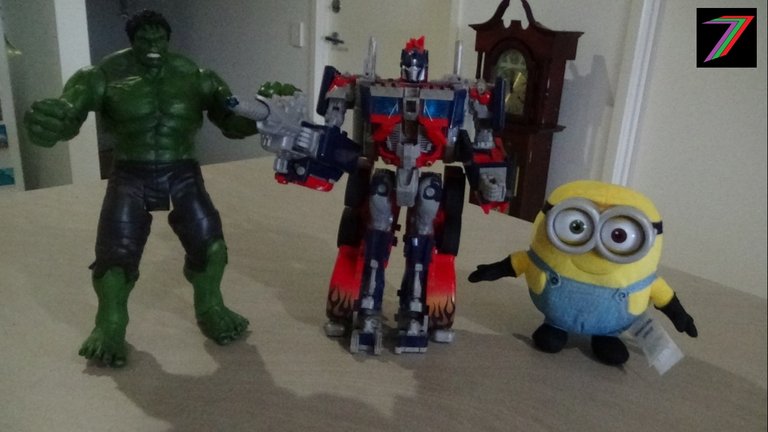
Heroes in picture: Hulk, Optimus Prime, and Bob
Welcome to another post in my game theory series. So far I have summarised the basics of game theory as well as presented three of the most commonly associated games in game theory. These three games are prisoner’s dilemma, battle of the sexes and chicken game.
Today I am going to be writing about a unique application of game theory and a game I call ‘triple threat’. I made a video about this game back in 2017, I will include the link to the video at the end of this post. In this post I will be elaborating further on the game and potential real life application of this game. I have also expanded upon the ideas previously expressed in the video. The ideas are still a work-in-progress but are almost at the stage that I can start testing them with empirical evidence.
Zero sum game
I find it easiest to explain the concept using a two player game becoming a three player game with the addition of one more player. It is also easier to explain the concept as a zero sum game. I will write a post dedicated to explaining what I mean by a zero sum game. This post will only provide a very brief explanation.
A zero sum game is a game with a fixed value, regardless of what happens in the game, the total value does not change only the players that take the value away. What one person gains another person loses. Poker is a good example of a zero sum game. The winner claims what the other players loss. Zero sum games can be applied to sports but not all sports or competitions are true zero sum games. I will explain further in another post.
What is triple threat?
I came up with the idea while watching wrestling. World Wrestling Entertainment (WWE) have a wrestling match called a triple threat match. This is a match between three wrestlers, every man for himself style of fight. In this match there can be only one winner. This does not mean that this style of match is ultimately all out competition between the three wrestlers. In fact, it is possible that cooperating could increase the chances of winning of the two cooperating wrestlers.
I took the idea of triple threat a little further. I start off with two people competing. One person has a definite advantage over the other. If they compete one-on-one, the majority of the time the stronger competitor will win. What happens if another person joins in, this person has not arrived with the intention of helping anyone but has the intention of winning the game. Initially, this would appear to lower both existing competitors chances of winning as there are now three players competing instead of two. I would like to demonstrate that this is not necessarily true.
Let’s assume that the players are able to cooperate. There are three possible combinations of cooperation. They are as follows:
- Stronger player cooperates with weaker player
- Stronger player cooperates with new player
- Weaker player cooperates with new player
Stronger player cooperating with weaker player
This strategy targets the new player. If successful, we will return to the two player game as before. Using this strategy, both players are slightly worse off after the arrival of the new player. Chances of success against each other remains the same but there is a chance that the new player could succeed over their combined efforts, in most cases this is highly unlikely.
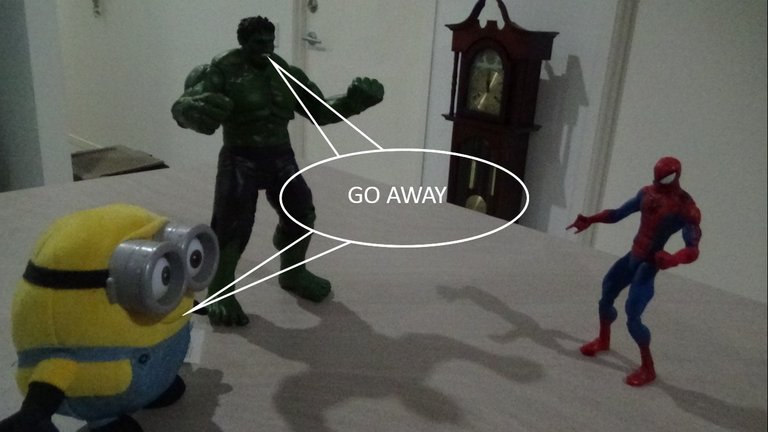
Stronger player cooperates with new player
This strategy targets the existing player. If successful, we will have a new two player game of the stronger player against the new player. If the new player is weaker than the weak player, the chances of the stronger player succeeding has most likely increased; we still need to consider the unlikely possibility of the weaker player succeeding over the combined efforts of the new and stronger player. If the new player is stronger than the weak player, the chances of the stronger player succeeding has decreased.
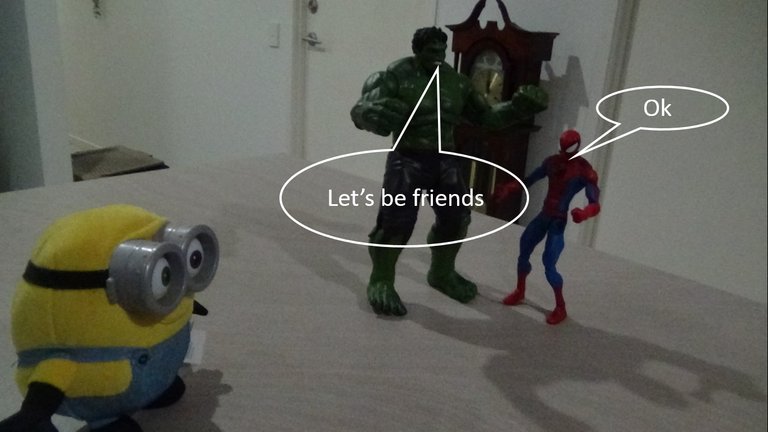
Weaker player cooperates with new player
This strategy targets the stronger player. If successful, we will have a new two player game of the weaker player against the new player. If the new player is weaker than the stronger player, the weaker player has a higher chance of succeeding in the new two player game. If the new player is weaker than the weaker player, the efforts of cooperation may have a high chance of failure and the two player game between the new player and the weaker player may never occur.
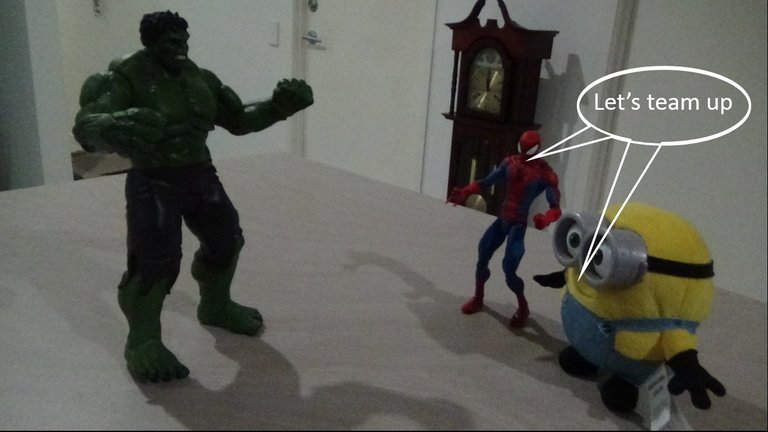
The two strategies that should be of most interest are the stronger player cooperating with the new player and the weaker player cooperating with the new player. Both these strategies provide the opportunity to improve an existing player’s position. The new player needs to decide who to cooperate with, if anyone. Cooperating with the stronger player will have a great chance of success against the weaker player but the new player is left to face the stronger player. Cooperating with the weaker player will likely have some chance of success against the stronger player. The new player then only needs to succeed against the weaker player. How does the new player decide who to cooperate with?
New player’s strategies
The new player’s decision depends on several factors. These factors are:
- The difference in strength between the weaker player and the stronger player.
- Relative strength of the new player compared with the existing players. I.e. stronger than both, weaker than both or somewhere in the middle.
- The extent of the advantages of cooperating.
The difference in strength between the weaker player and the stronger player
A large difference in strength is likely to discourage cooperation. The stronger player would not desire cooperation because of existing dominance. The weaker player will most likely desire cooperation but cooperation is unlikely to be successful. Therefore, cooperation is not desirable for the new player. A small difference in strength will most likely encourage cooperation. Both the stronger and weaker players are most likely to welcome cooperation. It is generally more advantageous for the new player to cooperate with the weaker player as after success against the stronger player the weaker player will make an easier opponent.
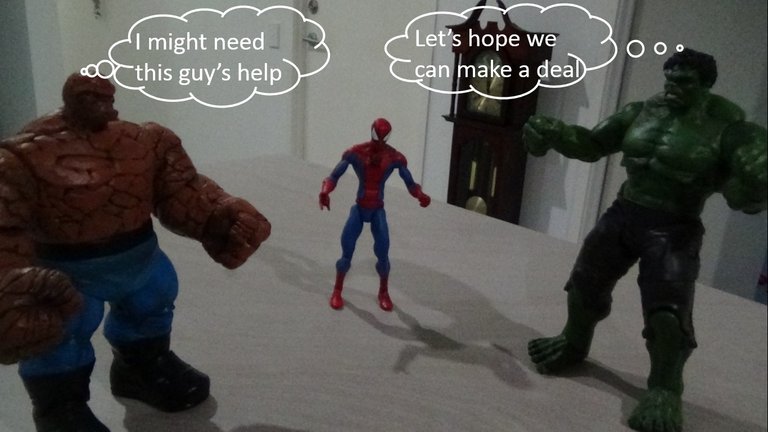
Relative strength of the new player compared with the existing players
If the new player is stronger than the stronger player, cooperation is more likely to be difficult as the stronger player and weaker player are likely to cooperate against the new player. If the new player is weaker than the weaker player, cooperation might also be difficult as the new player will be perceived as irrelevant by the stronger player and considered ineffective by the weaker player. If the new player is stronger than the weaker player and weaker than the stronger player, cooperation is likely. The weaker player will want to cooperate with the new player as success against the stronger player is more probable. The stronger player may also want to cooperate with the new player to prevent the new player from cooperating with the weaker player.
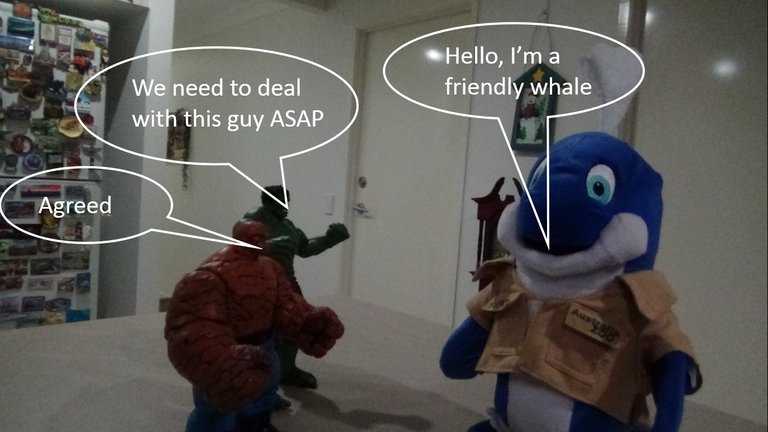
The extent of the advantages of cooperating
This one is straight forward. The greater the advantage of cooperation, the more likely players are to cooperate. This requires there to be a perception of the advantage of cooperation as well.
Determining criteria for success
It is important to determine criteria as to when adding another player can increase the likelihood of success of an existing player. If we assume all players are of equal strength, in the absence of cooperation, both players have a 1/2 chance of succeeding. If we add another player of equal strength, the three players have 1/3 chance of succeeding. This example does not meet the criteria of increasing the success of an existing player. Even if cooperation was possible and perfect (we return to 50-50 chance of winning).
Let’s assume the stronger existing player has a 3/4 chance of winning and the weaker player has a 1/4 chance of winning. The strength of new entrant is halfway between that of the stronger player and the weaker player. In the absence of cooperation, the stronger player now has a 1/2 chance of winning, the weaker player has 1/6 chance of winning and the new entrant has a 1/3 chance of winning. If the stronger player cooperates with the new entrant, and cooperation is successful. The stronger player will have a 3/5 chance of winning, which is less than 3/4, which was the chance of winning against the weaker player. Therefore, cooperation has not improved the stronger player’s chance of success. If the weaker player cooperates with the new entrant and cooperation is successful. The weaker player will have a 1/3 chance of winning, which is more than 1/4, which was the chance of winning against the stronger player. For the triple threat criteria to be met, cooperation between the new player and the weaker player needs to have a chance of winning that is greater than 3/4 (1/4 / 1/3).
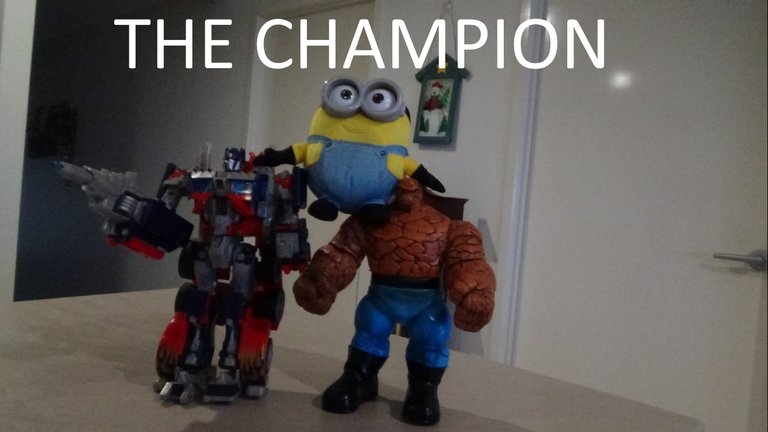
Extending the idea to more players
The inclusion of more players may appear to complicate the game as the possible combinations for cooperation increases. The outcomes of such is still likely to be similar to a three player game. The players joining after the third player will determine if and who to cooperate with based on the above factors explained. As more players join, the strength of the strongest players or groups of players should naturally be negated as cooperation amongst weaker players is more likely to be appealing as a mechanism of improving overall success.

The following gif demonstrates the effect of cooperation on a larger scale if all weaker players are in agreement. It was also a great opportunity to have a bit of fun with my Simpsons characters.
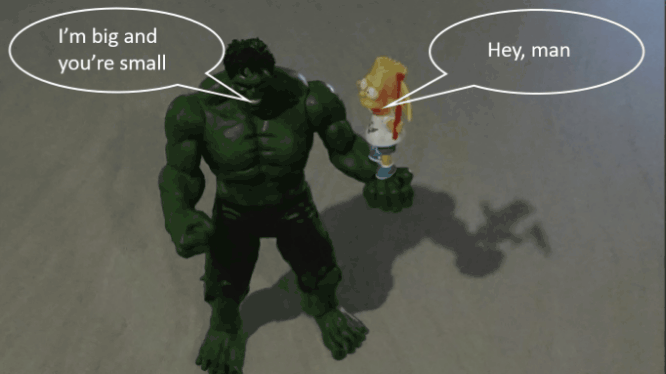
Non-zero sum game
We can also investigate non-zero sum games as well. The ‘triple threat’ idea can potentially be used to encourage cooperation in a zero sum game. The opportunities in a non-zero sum game are greater than for zero sum games as cooperation can actually prove beneficial to all players. So far, I have not focused my attention on non-zero sum games because if the idea of triple threat can be successfully applied to zero sum games it will be even more successful for non-zero sum games.
Possible real life application
I believe the triple threat idea can be used to look at any set up in society or business where competition exists. There are many existing debates regarding competition. Many debates go into intervention vs. non-intervention. Triple threat looks at particular conditions where there is no external intervention and the playing field can naturally level out. This is simply based on players making alliances and cooperating in order to improve their chances of success. It is like a monopoly or oligopoly evolving into monopolistic competition with the arrival of additional entrants. I still need to investigate further to be able identify any real life examples of this occurrence. I hope to be to present this in later posts.
Key points
So what are the key points so far? Cooperation is possible and in many cases plausible for zero sum games that allow additional entrants. Additional entrants can increase the probability of success of existing entrants under certain conditions. Cooperation is also likely to occur based on certain factors. These factors include strength of existing players, strength of new players and advantages of cooperation. The triple threat idea can be expanded to a much larger number of players. In the absence of intervention, if players act logically, the larger stronger players will not be able to dominate the game. If there is a very large gap between the strongest and weakest, it will take substantially more entrants to level the playing field. Barriers to entry can prevent new players, hence preserving the power structure.
Here is the link to the 2017 video
For more information on game theory, you can access my introduction post using the link below:
You can access my post on prisoner’s dilemma using the link below:
You can access my post on chicken game using the link below:
You can also access my post on battle of the sexes using the link below:









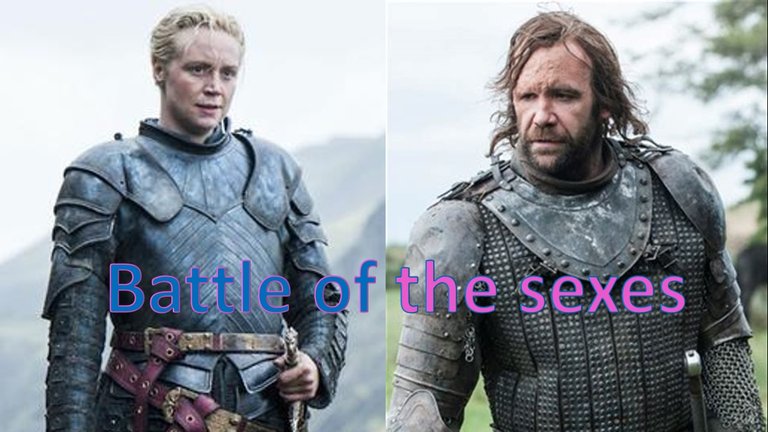
Good job @spectrumecons
Thanks @kaka08
Hi, I hope you followed me and I would vote more and comment
Can I join your teem
HMMM, yeah. Why not?
great post and awesome game @spectrumecons
Thanks @taillah
You are welcome frend
Well in terms of strategy the concept of 3 is awesome, all the above mentioned strategies may work, but what about 4 instead of 3, it will get more complex and intresting. Isn't?
It certainly will and I will be working through examples of 4, 5, and maybe even 6 player games.
That's great, best of luck for the work
interesting ideas combine 3 different characters, if the project is completed of course very exciting. especially for lovers of these figures, interesting articles, thanks @spectrumecons
They are three of my greatest heroes. They are very different but charming in their own way.
Unfortunately all the three toys are my son's favorite. So cool and interesting article post. Nice game theory sir.
What can I say, he has good taste.
Sounds Very interesting. Thanks for share
@upvoted
Thanks for your support @robinsoncaiso.
Keep it up :):)
Fantastic post! Going to take a lot of this away with me! Thanks...
@OriginalWorks
That's great. I have been working on this idea for some time. I needed to get something penned down. Steemit seems a good place that provides an incentive for doing so.
good game apps, interesting games, great job,@spectrumecons
Thanks @gumid.
that's a cool way of presenting it really nice work :)
Thanks @blazing. I always appreciate your comments.
captivating & perfect!
Thank you but it still requires quite a bit more work. I'll have another post in a few months with further developments.
triple threat’ is also an upcoming movie
Sorry, it's not linked in any way.
o sorry I didn't linked it dear, but mostly games names are same
great game idea!
Thank you @tiger38. I'm hoping to develop it further. I think the application has the potential to be huge.